The Sagrada Familia in Barcelona stands as a testament to human creativity and ambition, embodying both the genius of architect Antoni Gaudí and the enduring spirit of artistic endeavor. Known as The Unfinished Masterpiece: Sagrada Familia Barcelona and Its Eternal Construction, this iconic basilica captivates millions with its intricate designs and monumental scale, even as construction continues over a century after Gaudí's death.
Every stone and spire tells a story, reflecting a unique blend of Gothic and Art Nouveau styles that push the boundaries of architectural possibility. The ongoing work on the Sagrada Familia not only highlights the challenges of completing such a complex vision but also symbolizes the relentless pursuit of perfection in art and architecture.
Exploring the Architectural Genius of Sagrada Familia in Barcelona
The architectural genius of the Sagrada Familia lies in its innovative use of geometry and natural forms, creating a structure that harmonizes with its surroundings. Gaudí's inspiration came from nature, leading to unique shapes that resemble trees and plants, which are evident in the basilica's towering columns and organic motifs. This immersive approach to design encourages visitors to experience a deep connection with the environment.
One of the most fascinating aspects of the Sagrada Familia is its light and color interplay. Through stained glass windows, sunlight floods the interior, creating a kaleidoscope of colors that change throughout the day. This effect not only enhances the spiritual atmosphere but also showcases Gaudí's mastery in manipulating light, a feature that sets this basilica apart from traditional churches.
The structure's construction is a remarkable feat of engineering, characterized by intricate details and bold structures. Key elements include:
- Hyperboloid Structures: These geometrical forms provide strength and visual appeal.
- Parabolic Arches: They allow for greater height and stability.
- Natural Materials: The use of local stone enhances the building’s integration with its environment.
As an ongoing project, the Sagrada Familia embodies a collaborative effort that spans generations. Craftsmen, architects, and artists continue to contribute to Gaudí's vision, ensuring that his extraordinary work evolves while remaining faithful to his original concepts. This dynamic construction practice reflects not just the aspirations of one man, but the collective dream of a city dedicated to art and spirituality.
The Legacy of Antoni Gaudí: Visionary Behind Sagrada Familia
Antoni Gaudí's legacy is inseparable from the Sagrada Familia, as he transformed architectural norms with his visionary ideas. His approach was characterized by a deep respect for nature and an unparalleled imagination, allowing him to create a unique aesthetic that merges functionality with beauty. Gaudí's ability to envision a structure that transcended traditional forms established him as a pioneering figure in modern architecture.
The Sagrada Familia embodies several of Gaudí's core principles, which include:
- Organic Architecture: Gaudí believed that buildings should reflect their natural surroundings, leading to designs inspired by natural forms.
- Symbolism: Each aspect of the Sagrada Familia is rich in meaning, from its facades that narrate biblical stories to its towers symbolizing the twelve apostles.
- Innovative Use of Materials: Gaudí employed local stone and innovative techniques, pushing the boundaries of construction materials of his time.
His visionary outlook didn't just shape the Sagrada Familia; it also influenced a generation of architects and continues to inspire contemporary design. Gaudí's work is a bridge between the past and the future, demonstrating that architecture can be both functional and a form of artistic expression. The ongoing construction of the Sagrada Familia serves as a reminder of his enduring impact, inviting new generations to explore and appreciate his unparalleled genius.
In conclusion, Gaudí's legacy is a celebration of creativity, innovation, and spirituality. The Sagrada Familia stands not just as a building, but as a testament to the human spirit's quest for beauty and meaning in the world. His ability to envision a masterpiece that remains unfinished challenges our understanding of perfection and completion in art, encouraging us to embrace the journey rather than solely the destination.
A Journey Through Time: The Ongoing Construction of Sagrada Familia
The ongoing construction of the Sagrada Familia is not just a testament to architectural ambition; it represents a journey through time, reflecting the evolution of building techniques and artistic expressions over more than a century. Each phase of construction has been marked by advancements in technology and changes in societal values, making the basilica a living chronicle of both history and innovation.
As work progresses, several key milestones illustrate the evolution of the Sagrada Familia's construction:
- Gaudí's Influence: From 1882 until his death in 1926, Gaudí's original designs and vision guided the initial phases of the project.
- Post-Gaudí Era: After Gaudí's passing, the construction faced numerous challenges, including funding shortages and World War II, which led to significant delays.
- Modern Techniques: Recent advancements in technology, such as computer-aided design and 3D printing, have allowed contemporary architects to interpret and execute Gaudí's complex geometric forms with precision.
- Projected Completion: The current timeline estimates completion by 2026, marking the centenary of Gaudí's death, and continues to inspire hope and dedication.
This intricate tapestry of time not only highlights the architectural feats achieved but also symbolizes the enduring commitment of artisans and volunteers who have dedicated their lives to this monumental project. The Sagrada Familia evolves, reflecting a blend of historical reverence and modern innovation, as it stands poised to welcome future generations into its sacred space.
Visitors to the Sagrada Familia experience a unique interaction with the ongoing construction, witnessing firsthand the blend of past and present. Each visit reveals new elements as artisans painstakingly add details that resonate with Gaudí's vision. The basilica's construction serves as a reminder that true masterpieces are not merely completed structures but rather living entities that invite continuous exploration and appreciation.
Symbolism and Meaning: Understanding the Design of Sagrada Familia
The design of the Sagrada Familia is deeply imbued with symbolism and meaning, reflecting Antoni Gaudí's profound connection to spirituality and nature. Each façade serves as a visual narrative, telling biblical stories through intricate sculptures and carvings. This storytelling aspect not only enhances the spiritual experience but also invites visitors to engage with the themes of faith and redemption woven into the fabric of the basilica.
At the heart of the Sagrada Familia lies an intentional blend of Gothic and Art Nouveau styles, which is evident in the structure’s towering spires and fluid forms. Gaudí meticulously designed each element to resonate with a deeper meaning, such as the twelve towers representing the apostles and the three grand façades depicting the nativity, passion, and glory of Christ. This multifaceted approach encourages observers to reflect on the layers of significance embedded within the architecture.
Gaudí's focus on nature as a source of inspiration is also prominent in the Sagrada Familia's design. The organic shapes mimic the natural world, creating a seamless transition between the built environment and its surroundings. Key features include:
- Tree-like Columns: Supporting the basilica’s ceiling, these columns evoke the strength and grace of nature.
- Stained Glass Windows: The use of vibrant colors draws on natural light, transforming the interior into a dynamic canvas that shifts with the sun.
- Facade Symbolism: Each facade tells a story, encouraging visitors to contemplate the spiritual journey of humanity.
In essence, the Sagrada Familia stands as a monument not only to Gaudí's architectural brilliance but also to the universal quest for meaning and connection. As construction continues, the evolving structure remains a symbol of hope and aspiration, inviting all who visit to contemplate their own place within this ongoing narrative.
Visiting the Sagrada Familia: Tips for an Unforgettable Experience
When planning your visit to the Sagrada Familia, consider purchasing timed tickets in advance to avoid long queues. This ensures a smoother entry and allows you to maximize your time exploring the basilica's stunning architecture. Additionally, consider visiting during off-peak hours, such as early mornings or late afternoons, for a more serene experience.
As you wander through the basilica, make sure to take advantage of the audio guide or mobile app available for download. These resources provide valuable insights into Gaudí's vision, the symbolism behind various elements, and the ongoing construction process. This context will enrich your understanding and appreciation of the masterpiece as you explore its intricate details.
Don't forget to allocate time to explore the surrounding area, which is home to beautiful parks and viewpoints. Among them, the Park Güell offers stunning vistas of the Sagrada Familia and the city beyond. A guided tour of this enchanting park can further enhance your experience, showing you how Gaudí's artistry extends beyond the basilica itself.
Finally, consider bringing a good camera to capture the breathtaking visuals. The play of light through the stained glass and the unique architectural forms provide countless opportunities for striking photographs. Remember to be respectful of the space; while capturing memories is important, maintaining the sanctity of this spiritual site is paramount.
The Cultural Significance of Sagrada Familia in Modern Barcelona
The Sagrada Familia holds profound cultural significance in modern Barcelona, acting as a symbol of both heritage and innovation. As an iconic landmark, it draws millions of visitors each year, fostering a sense of identity among locals and contributing significantly to the city's economy through tourism. The basilica's unique design and ongoing construction are celebrated as a reflection of Barcelona's commitment to arts and culture, highlighting the city’s role as a hub for creativity.
Moreover, the Sagrada Familia serves as a gathering place for various cultural events and activities, bridging the gap between past and present. The following aspects underline its importance in the community:
- Artistic Inspiration: The basilica influences artists, architects, and designers, encouraging a modern reinterpretation of traditional forms.
- Educational Programs: Workshops and guided tours promote awareness of Gaudí's vision, fostering a deeper appreciation for architectural heritage.
- Community Engagement: Local events and exhibitions around the site create a vibrant atmosphere, enhancing community pride and involvement.
In addition to its artistic significance, the Sagrada Familia is a spiritual beacon, attracting those seeking solace and reflection. Its intricate details and sacred symbolism resonate deeply with visitors, providing a space for contemplation and inspiration. The basilica's design—melding Gothic and Art Nouveau styles—serves as a reminder of Barcelona's rich history while also embracing modernity, making it a pivotal landmark in the city's ongoing narrative.
Ultimately, the Sagrada Familia stands not merely as a building, but as a living monument to the city’s cultural vitality. Its ongoing construction signifies a commitment to preserving artistic legacy while inviting future generations to engage with its story, ensuring that this masterpiece remains a central piece of Barcelona's cultural tapestry.
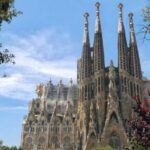 The Sagrada Familia: Is it Free to Visit?
The Sagrada Familia: Is it Free to Visit?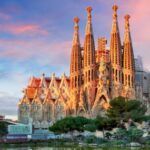 Barcelona's Sacred Family with a Stunning Rooftop Bar: A Must-Visit Experience
Barcelona's Sacred Family with a Stunning Rooftop Bar: A Must-Visit ExperienceIf you want to know other articles similar to The Unfinished Masterpiece: Sagrada Familia Barcelona and Its Eternal Construction you can visit the category Blog.
Leave a Reply

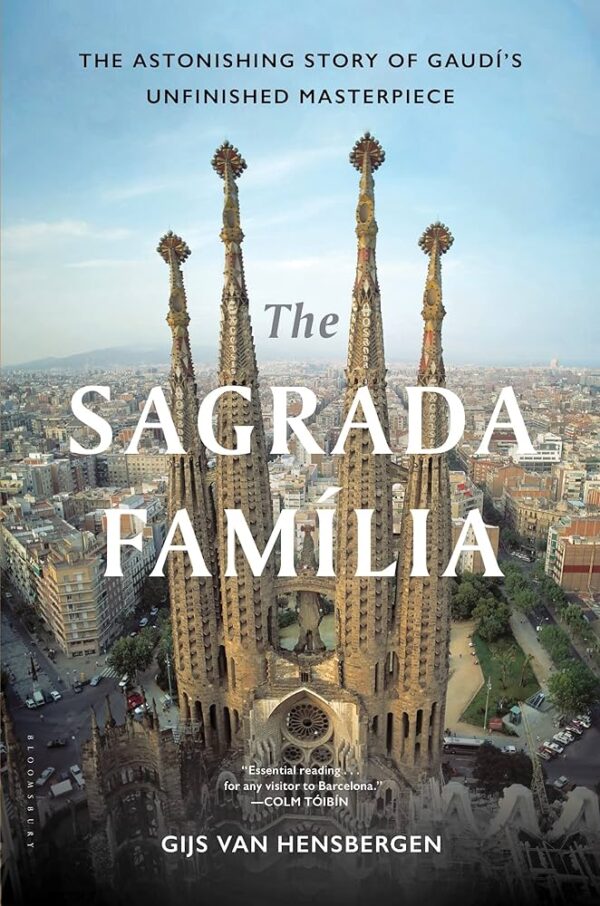
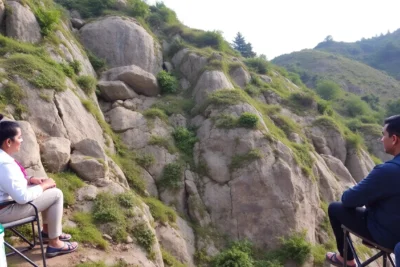
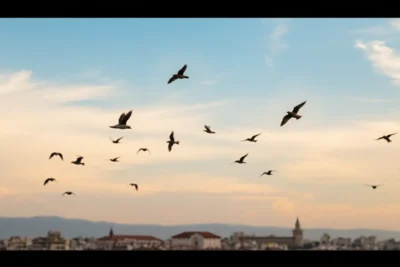



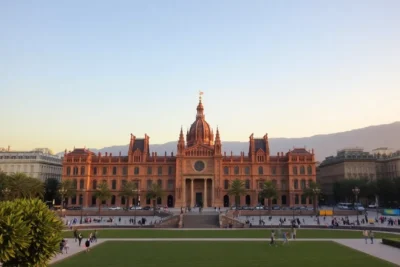

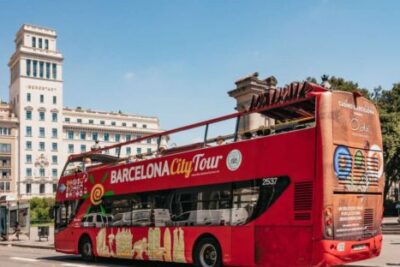
Read more!